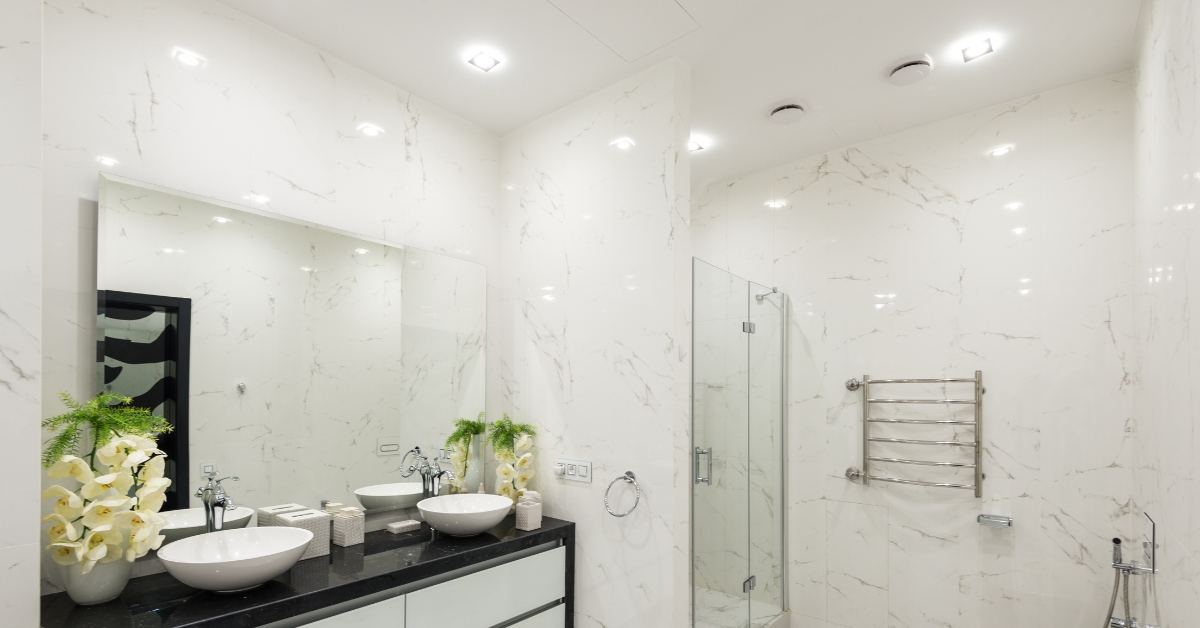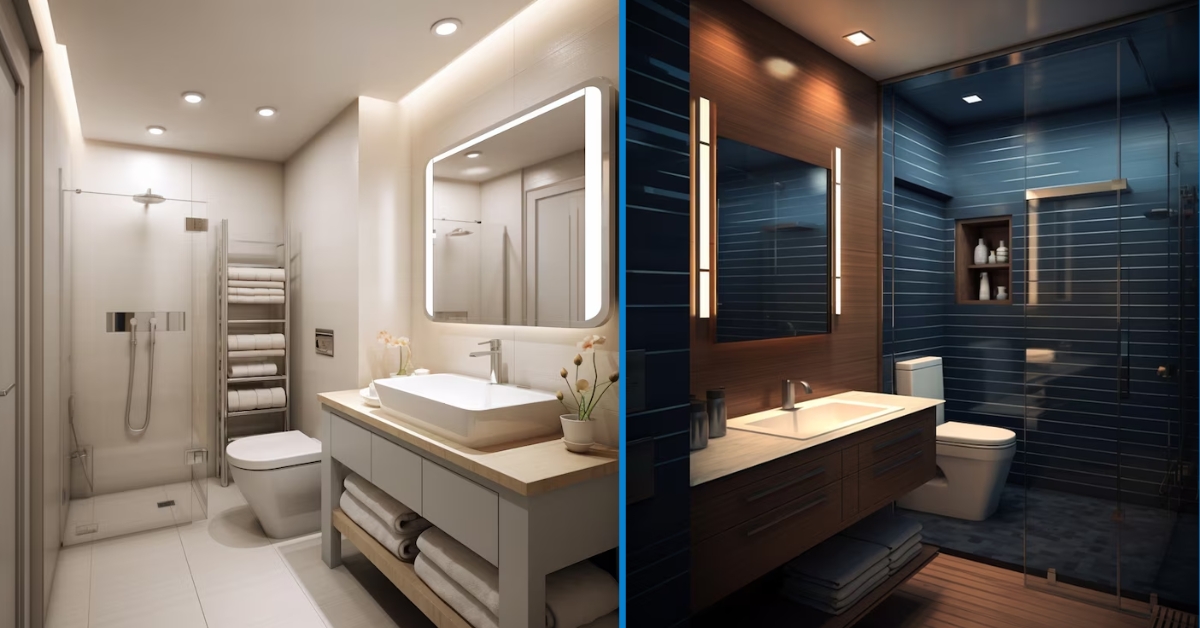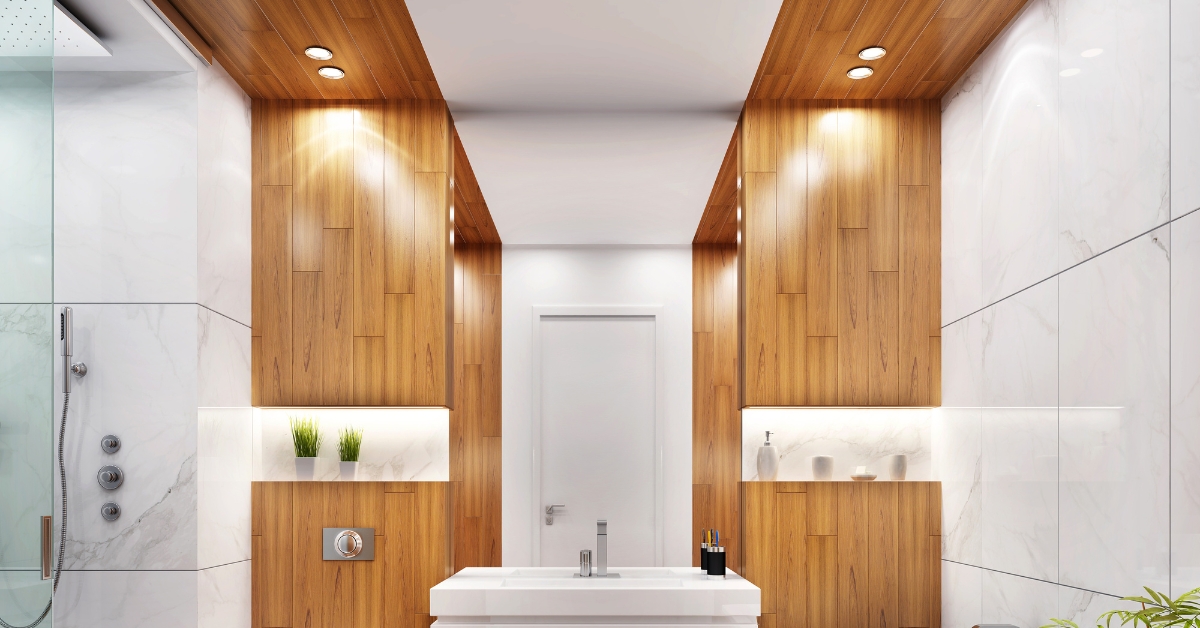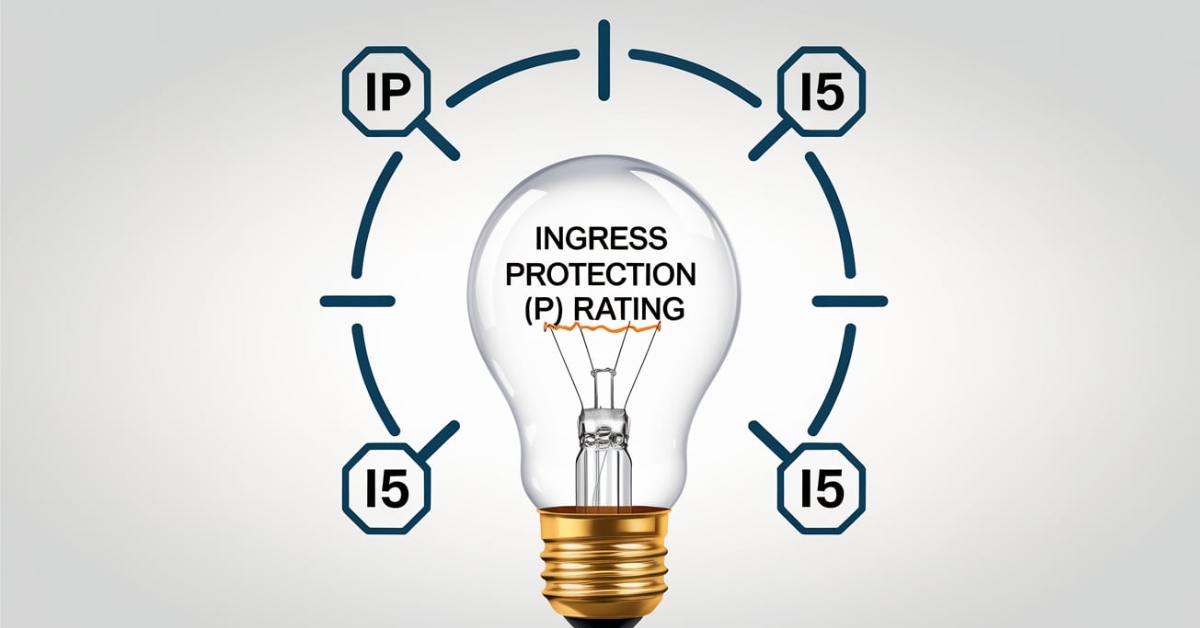How to Choose the Correct Lighting for Your Bathroom

The bathroom is more than just a functional space—it’s a sanctuary where you start and end your day. From grooming to relaxing, the right lighting can make all the difference in how you experience your bathroom. Choosing the correct lighting involves more than just picking out stylish fixtures; you also need to consider essential factors like colour temperature and Ingress Protection (IP) ratings to ensure safety and functionality. Whether you want to create a spa-like ambience or have proper illumination for your daily tasks, selecting the right lighting is key.
For further insights into bathroom lighting safety and design, you can check out Lighting Europe or The Lighting Industry Association.
Colour Temperature:
What is Colour Temperature?

Colour temperature describes the appearance of light provided by a bulb or fixture, ranging from warm (yellowish) to cool (bluish) tones. Most LED bulbs are available in two key options: warm white or cool white. The warmer the tone, the lower the temperature; conversely, cooler tones have a higher temperature. For example, a warm white light mimics natural sunlight, offering a calming, relaxing environment, while a cool white light is crisp and ideal for task-oriented spaces like the vanity.
When choosing your bathroom lighting, it’s essential to consider how much natural light your bathroom receives. Does your bathroom have large windows that flood the room with daylight, or is it a more enclosed space? Rooms with ample daylight can benefit from warm white lighting in the evening to create a soothing glow. Meanwhile, if your bathroom has little to no natural light, cool white lighting can brighten up the space, ensuring you have sufficient brightness for tasks like shaving or applying makeup.
Credit: VEWtube
Choosing Between Warm and Cool White

Is warm white or cool white better for your bathroom? The answer depends on your specific needs and preferences. For task lighting—such as around mirrors for shaving, applying makeup, or grooming—cool white lighting is preferable due to its clear, bright output that closely resembles daylight. However, for general lighting or areas meant for relaxation, warm white is the way to go, as it creates a soft, inviting glow that’s perfect for unwinding at the end of a long day. It’s important to consider how each area of your bathroom will be used. For instance, overhead lighting might be cool white for maximum visibility, while accent lighting around the bathtub could be warm white to enhance the calming atmosphere. You can explore this guide for more tips on lighting choices.
Creating Ambience:

Setting the Right Mood
Lighting plays a pivotal role in setting the mood of your bathroom. If you’re looking to create a tranquil environment perfect for long, relaxing baths, deep warm white lighting can enhance the ambience, providing a comforting, spa-like feel. This is why many spas and treatment rooms opt for warmer lighting—to cultivate a sense of peace and relaxation. Warm lighting is ideal for creating a cosy atmosphere, especially in the evenings.
On the other hand, if you’re after a more vibrant, energised feel, especially for morning routines, cool white lighting is the way to go. This type of lighting is bright, clean, and invigorating, perfect for starting your day with a fresh burst of energy. Bathrooms that serve as multi-functional spaces, such as those with vanity areas, benefit from a mix of lighting types to ensure both ambience and practicality. Keep in mind that your bathroom lighting needs to balance both moods depending on your needs.
Credit: Lowe's Home Improvement
Zones & Ingress Protection (IP) Rating:

Understanding Safety Regulations
While the look and feel of your bathroom lighting are important, safety should never be overlooked. Bathrooms are high-moisture areas, and this means any electrical equipment, including lights, must be adequately protected against water. This is where Ingress Protection (IP) ratings come into play. IP ratings indicate how well a fixture is protected from dust and moisture. The higher the rating, the more resistant the light is to water, making it safer for use in wet environments like bathrooms.
IP Ratings and Bathroom Zones
Bathroom lighting is divided into zones, each requiring different levels of protection. Understanding these zones is crucial to choosing the right fixtures:
- Zone 0: Inside the bath or shower, lights must have at least an IP65 rating and be low voltage. These lights are subjected to direct contact with water, so this high rating ensures they are safe and water-resistant. For added peace of mind, check out Meteor Electrical's range of IP65-rated lights here.
- Zone 1: This zone is located directly above the bath or shower, up to 2.25m from the floor. Lighting fixtures in this area must have a minimum rating of IP44, ensuring protection against water splashes. You can view our collection of IP44-rated lights here.
- Zone 2: This is the area immediately surrounding Zone 1, extending 0.6m around the bath or shower and up to 2.25m high. Like Zone 1, lights here need to be rated IP44 at a minimum. Lighting placed in Zone 2 must be designed to withstand moderate exposure to moisture, making IP44 fixtures the standard choice.
| Bathroom Zone | Location | IP Rating Required | Lighting Example |
|---|---|---|---|
| Zone 0 | Inside the bath or shower | IP65 (minimum) | Waterproof LED lights, low voltage lighting |
| Zone 1 | Directly above the bath or shower (up to 2.25m) | IP44 (minimum) | Downlights, ceiling-mounted lighting |
| Zone 2 | 0.6m around the bath/shower, up to 2.25m high | IP44 (minimum) | Wall lights, recessed lighting |
| Outside Zones | Areas beyond Zone 2, typically away from water | No specific IP required | General ceiling or wall-mounted lights |
By selecting the correct IP-rated lighting for each zone, you ensure not only the longevity of your fixtures but also the safety of everyone using the bathroom. Proper lighting installation by a qualified electrician is essential to meet safety standards, so be sure to consult with an expert when planning your lighting design.
Conclusion:
Choosing the right bathroom lighting involves a balance of style, functionality, and safety. With a clear understanding of colour temperatures and IP ratings, you can make informed choices to achieve both a beautiful and practical bathroom space. Whether you’re looking to create a calming retreat with warm white lighting or need bright, cool white lighting for tasks, Meteor Electrical offers a wide range of solutions to fit every need.
Browse our collection of high-quality bathroom lights today and let us help you light up your space with confidence. For additional resources, you can also explore Lighting.com for design inspiration and lighting trends.
FAQs:
1. What is the best colour temperature for bathroom lighting?
The best colour temperature depends on the purpose. For task areas like mirrors, cool white (4000K–5000K) is ideal for clear visibility. For relaxing areas, warm white (2700K–3000K) creates a cosy, calming ambience.
2. Can I use any type of light in my bathroom?
No, bathroom lights must meet safety standards, including the appropriate IP (Ingress Protection) rating, which varies by zone. For example, lights in wet areas like inside showers need a minimum IP65 rating.
3. What is an IP rating, and why is it important for bathroom lighting?
IP ratings indicate how resistant a light fixture is to water and dust. It’s important because bathroom lighting needs to be protected from moisture to ensure safety, especially in wet zones like showers and bathtubs.
4. Can I install lights directly above my shower?
Yes, lights can be installed above the shower as long as they meet the minimum IP44 rating for moisture resistance. IP65 is required for lights in direct contact with water.
5. How can I create a relaxing atmosphere with bathroom lighting?
To create a relaxing atmosphere, opt for warm white lights (2700K–3000K) around the bathtub or shower area. Using dimmable fixtures can also help adjust the lighting to suit your mood.

